
This Analysis of the Last 50 Years of Pop Music Reveals Just How Much America Has Changed
Written by Shane Snow
Image by
AP Images
May 7th, 2015
With today’s smartphone penetration, it might be appropriate to amend that statement, saying, “You can learn a lot about someone by what he or she listens to on the toilet.”
Every generation seems to give the next one crap for its music. (See what I did there?) I teased my parents about their disco until one day all my Green Day and Good Charlotte sounded dated in my headphones. “Old people” used to tell us kids that our songs were a reflection of our disintegrating values, that music was worse than it used to be. Sure, they missed their Elvis and their Bee Gees, but they also missed the days when we appreciated good morals. The lyrics we mouthed, the artists we worshipped, the genres we bumped were all evidence of society sliding into the sewer.
Today, when I roll my eyes at the latest Ke$ha song on the radio, I occasionally catch myself thinking the same thing.
But, I’ve wondered, hasn’t music always been a little edgy? Is society—and music—really going downhill, or are our generational complaints just about nostalgia?
Like a good nerd, I recently decided to map our “decay” through samples of popular music from the last six decades. I grabbed Billboard’s top 10 songs of the third week of April every 10 years since 1965, and analyzed them.
Here they are:
1965

1975

1985

1995

2005

2015

Clearly, music has changed over the years. Genres have emerged, evolved, mashed together. This is just a one-week slice and not a large enough sample to do a proper statistical analysis, but it’s enough to illustrate some pretty interesting things.
For instance, language. Here are the most popular lyrics that top artists were singing this week:
1965:

1975:

1985:

1995:

2005:

2015:

It looks like top artists of the ’60s and ’70s used a lot of typical poetry vocab—literal lyrics like “love.” And, apparently, in the ’80s we were obsessed with songs about “the night.” In the ’90s with the rise of hip-hop and R&B we get more diversity of vocabulary and topics, and in the next two decades there’s more focus on self, with “I’m” as the top word sung. But in general, we seem to be singing about our same old feelings throughout the ages.
I read the lyrics of each of these songs and charted the main topics of each decade:
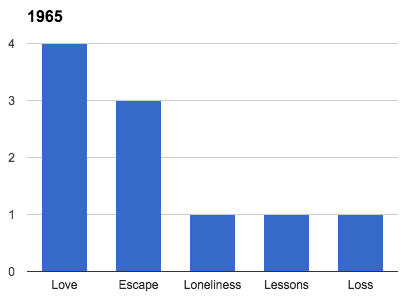
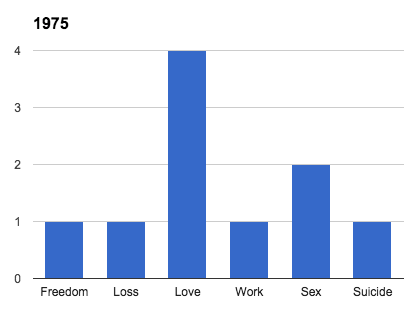
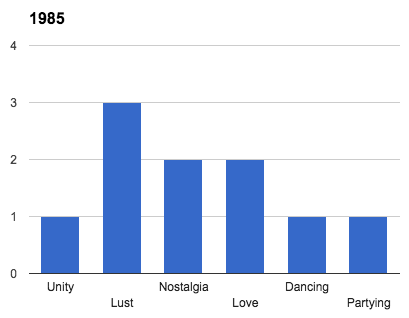
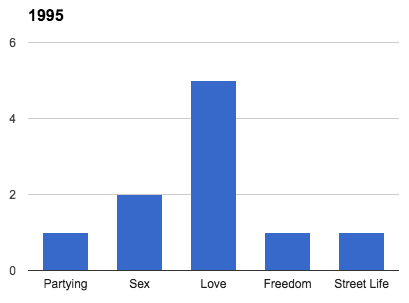
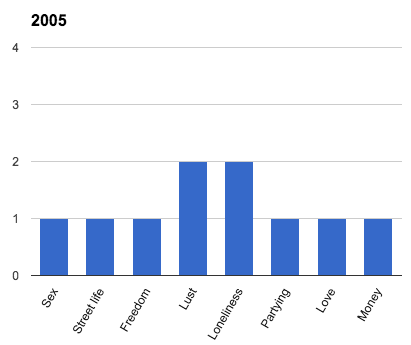
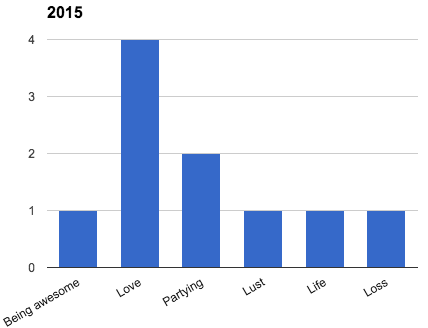
We still sing predominantly of love, but over the years we’ve branched out to different topics. Popular subject matter seems to have shifted from simply sappy to a mix of upbeat and dark—partying, lusting, loving, and living and losing. It’s the same stuff, really, but with a little more specificity. But it’s also interesting to see how each decade has its own set of priorities—at least from this small sample.
But how have our values changed over these years? Of the top 10 songs for this week in each decade, here’s the breakdown of “questionable” content:

It looks like we’ve gotten more comfortable with profanity and substance use over the decades, but sex and violence haven’t really increased—at least in top radio hits. (One of the things this analysis doesn’t show is the proliferation of genres over the years. In the Internet era, we have a lot more music in a lot more categories, so there certainly is a larger volume of questionable content out there; it’s just not popular in an outsize way.)
These charts are interesting, but I think we can learn something much more important about society through the music we prize that has nothing to do with lyrics. Musicians themselves—and the way they work together—say something about our culture. For instance, here’s the breakdown of top artists by type:


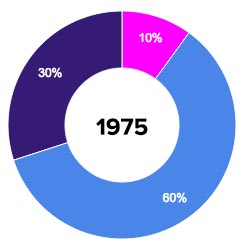
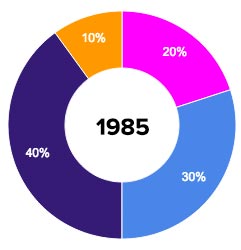
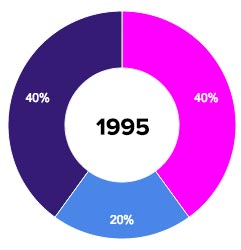
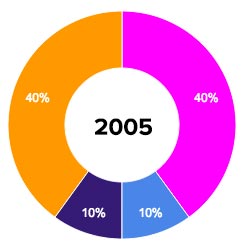
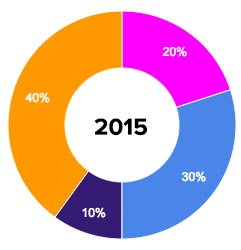
(Pink and blue indicate soloists.)
Over the years, we’ve gone from primarily groups and bands, to more solo artists, to collaborations between different artists—across genres, across generations, across races. This type of collaboration is a huge trend in music today. Paul McCartney, Rihanna, and Kanye’s hit collaboration on this year’s list above is a great example.
I think this pretty accurately reflects the way our culture has shifted over the years. We recognize the value of generative differences—the melding of diverse people and ideas to make something new and stronger than before. We appreciate these types of differences in a way we didn’t before, as the following chart makes especially apparent:

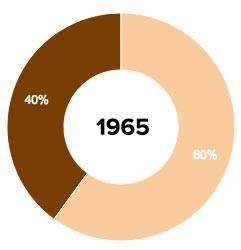
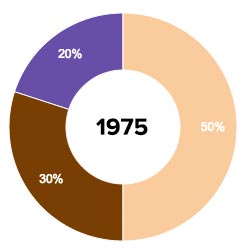
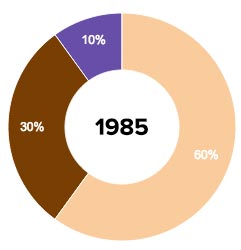
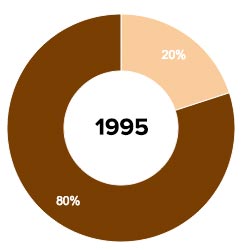
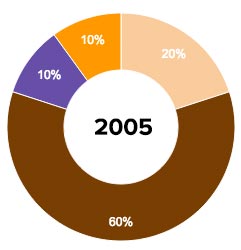
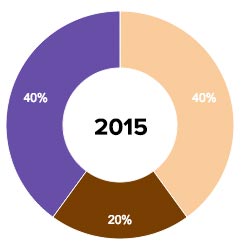
So, although youths these days like music with a little more profanity than in the past, we’re experiencing a historic mixing and collaboration between musicians of different races. This reflects society’s increased appreciation of diversity, which is an awesome thing. It’s led to awesome music, too.
As I write this, I’m listening to electro producer Madeon on a vinyl record player, piped through Bluetooth to a Vizio sound bar. It’s a mashup representative of today’s culture: fueled and changed by technology, spinning on a wheel of nostalgia, embracing blends of things we used to think didn’t belong together.
And creating something beautiful because of it.



No comments:
Post a Comment